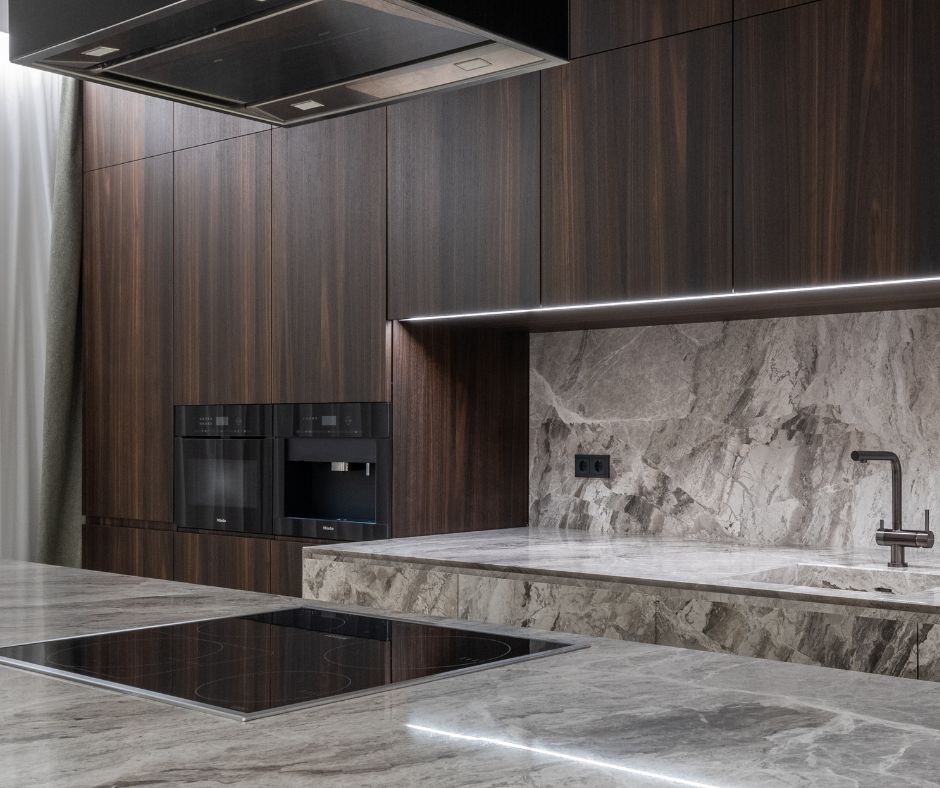Modern kitchens are the birthplace of new culinary traditions, and induction cooking technology is at the forefront of this evolution. Although its roots can be traced back to the early 20th century, with captivating demonstrations in the 1930s showcasing the ability to boil water using magnetic energy without visible heat, it has only been in the past few decades that induction cooktops have become integral to contemporary culinary spaces. This transformation has been fueled by significant advancements in technology, efficiency, and design, making induction cooking not just a trend but a staple in modern kitchens.
Today, a growing number of home chefs and culinary enthusiasts are embracing induction cooking due to its unique blend of sleek aesthetics, exceptional precision, and outstanding energy efficiency. This innovative cooking method not only accelerates meal preparation but also revolutionizes the home cooking experience by merging heat management science with culinary creativity, allowing chefs to craft exquisite dishes on its elegant, polished surface. The right induction cooktop can rival the speed of a microwave in delivering delicious and nutritious family meals!
Harness the Power of Precision Cooking for Maximum Flavor and Nutrition
Unlike traditional gas or electric ranges, induction cooktops utilize electromagnetic energy to directly heat cookware. This groundbreaking method reduces wasted heat, prevents burnt edges, and offers unparalleled control over both low and high temperatures. When you can manage heat with such accuracy, your ingredients retain more of their natural moisture, flavor, and nutritional integrity. Whether you’re flash-searing proteins, gently simmering sauces, or quickly blanching vegetables, induction cooking makes achieving perfect results a breeze, steering clear of overcooked meals and nutrient loss.
Elevate Your Kitchen Aesthetics with Stylish and Functional Induction Cooktops
In kitchens where every square centimeter counts, induction cooktops shine not only in performance but also in visual appeal. Their flat, smooth surfaces integrate seamlessly into your countertop, creating a minimalist look that enhances space for food preparation, elegant plating, or even casual dining experiences.
Unlike bulky traditional gas hobs, which feature cumbersome grates and protruding burners, induction cooktops sit flush with the countertop surface. While ceramic stovetops may offer a sleek appearance, they often remain dangerously hot long after cooking has concluded.
In contrast, induction surfaces cool down rapidly once the cookware is removed. The heat is generated by a magnetic interaction between the cooktop and the cookware, which means that the glass surface retains significantly less heat. This characteristic not only makes cleaning safer and easier but also creates a more secure cooking environment. This is especially beneficial for families with children or pets who might be curious about kitchen counters.
The result? A cooler kitchen with cleaner lines and increased flexibility—perfect for modern cooks who value both aesthetics and functionality in their culinary spaces.

Comprehensive Guide to Choosing the Best Cookware for Induction Cooking
Switching to induction cooking may present a bittersweet realization—you may need to part ways with some of your beloved old pans. Since induction technology relies on magnetic energy for effective heat generation, not all cookware will be suitable for this modern cooking method.
For cookware to perform efficiently on an induction cooktop, it must be constructed from ferrous (magnetic) metals, including cast iron, carbon steel, or magnetic-grade stainless steel. A simple test with a refrigerator magnet can determine compatibility: just place the magnet on the bottom of the pan. If it adheres firmly, you’re good to go.
When selecting new cookware, choose pans with a heavy, flat base. This design ensures optimal contact with the cooktop, providing even heat distribution that is critical for achieving perfect browning, tender roasts, and crispy edges. Additionally, high-quality induction cookware is constructed to resist warping over time, ensuring consistent cooking performance for every dish.
Although it may be tough to let go of old favorites, think of it as an upgrade. In exchange, you gain enhanced control, quicker cooking times, and meals that deliver richer flavors and textures.
Induction Cookware Essentials: Quick Checklist for Culinary Success
 Conduct a fridge magnet test—strong adhesion indicates induction compatibility
Conduct a fridge magnet test—strong adhesion indicates induction compatibility Select flat-bottom pans for optimal contact and heat distribution
Select flat-bottom pans for optimal contact and heat distribution Choose cast iron, carbon steel, or magnetic stainless steel cookware
Choose cast iron, carbon steel, or magnetic stainless steel cookware Avoid cookware made solely from copper, aluminum, or glass unless clearly labeled for induction use
Avoid cookware made solely from copper, aluminum, or glass unless clearly labeled for induction use Look for the induction symbol (resembling a horizontal coil or series of loops) stamped on the base or packaging
Look for the induction symbol (resembling a horizontal coil or series of loops) stamped on the base or packaging
Pro Tip: The induction symbol usually appears as a zigzag or coil graphic. Spotting it ensures cookware compatibility for induction use.
Essential Installation Guidelines for Your Induction Cooktop
Before diving into your culinary adventures with your new cooktop, it is crucial to prioritize several installation essentials:
-
Professional Installation Is Key: Induction units typically require dedicated electrical circuits and specific spatial clearances. Ensure you hire professionals knowledgeable about these requirements.
-
Hire a Licensed Electrician: Wiring a high-powered induction cooktop is not a do-it-yourself project.
Find out why it’s essential to hire a qualified electrician. -
Check Your Power Setup: Some induction models require substantial power. Before purchasing, confirm that your wiring meets the cooktop’s specifications.
Proper installation not only ensures optimal performance but also guarantees safety and longevity of your induction cooktop.
Essential Insights on Induction Cooking
Induction cooking is more than just a fast or safe option—it’s fundamentally intelligent. With the right cookware and a professionally installed induction system, you can consistently create better-tasting meals, richer textures, and healthier options, meal after meal. In today’s modern kitchens, precision cooking is not merely a preference; it has emerged as the new standard.
Frequently Asked Questions About Induction Cooktops
1. What Makes Induction Cooktops More Advantageous Than Gas or Electric Options?
Induction cooktops offer instant heat control, improved energy efficiency, and enhanced safety features. Because they heat the cookware directly, meals cook more rapidly with less energy waste, while the surfaces remain cooler, thus reducing the risk of burns.
2. Can I Use My Existing Pots and Pans on an Induction Cooktop?
Only if they are magnetic. Cookware made from cast iron or magnetic stainless steel is ideal for induction cooking. You can easily check if your pots and pans are compatible by placing a magnet on the base—if it sticks firmly, it’s suitable for induction use.
3. Does Induction Cooking Affect the Flavor of Food?
Absolutely, and in a positive manner. Because induction cooking enables precise temperature control, you can sear, sauté, or simmer without overheating, thus preserving the natural flavors, textures, and nutrients more effectively than with inconsistent gas or electric heat sources.
4. Is Special Wiring Necessary for an Induction Cooktop?
Most induction cooktops require a dedicated electrical circuit with specific voltage and amperage configurations. It is essential to have a professional electrician evaluate and install your wiring to ensure compliance with safety standards and to guarantee optimal performance.
The post The Secret Ingredient in Modern Kitchens: Induction Cooktops Are Changing the Game appeared first on https://cookinggods.com
The Article Induction Cooktops: The Game-Changer in Modern Kitchens Was Found On https://limitsofstrategy.com


Induction cooking truly represents a fascinating convergence of technology and culinary artistry. I appreciate how it not only enhances efficiency but also opens up new possibilities for control and creativity in the kitchen. I’ve recently transitioned to an induction cooktop myself, and the precise temperature management has transformed how I approach cooking, allowing me to experiment with techniques that require more finesse.
It’s great to hear about your experience with induction cooking. It’s interesting how a shift in technology can redefine familiar practices. The precision in temperature management certainly sets induction apart, doesn’t it? With so much control at your fingertips, it’s like having a professional-grade setup right in your kitchen.